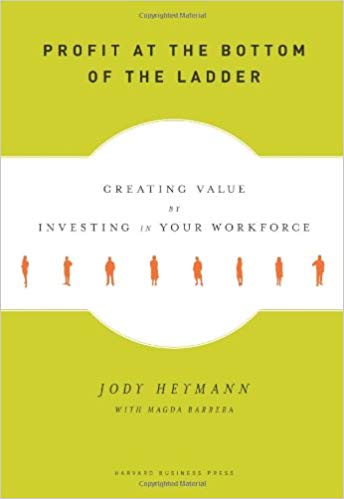 Employees come to us woven from unique threads of experience based on the environment they grew up in and how they spend their time. From the standpoint of general human experience it is the same, of course, for us. Many of us, however, tend to assume our employees and co-workers have the same basic mindset we do, and then we find out—sometimes to our dismay—that the majority of them don’t.
Employees come to us woven from unique threads of experience based on the environment they grew up in and how they spend their time. From the standpoint of general human experience it is the same, of course, for us. Many of us, however, tend to assume our employees and co-workers have the same basic mindset we do, and then we find out—sometimes to our dismay—that the majority of them don’t.
The environment of economic class can create misunderstanding, judgment, and conflict—or relationships of mutual respect in the workplace.
Most businesses operate on middle-class or stability norms and expect employees to do likewise. Since business usually operates using the norms, rules, and regulations of a stable environment, we create such things as employee manuals and tasks, and onboarding using the “stability” lens. We know that daily stability gives us the wherewithal to plan for tomorrow and the future. On the other hand, employees coming from a life of daily instability (due to the realities of economic class) tend to live in the moment, solving problems for today, making decisions based on relationships of those around them, and often are not thinking about the future. Thus the conflict begins.
Managing employees takes time, and naturally we want that time to be turned into meaningful productivity for the business. Turnover affects productivity, morale, work schedules, and workloads. It also affects deadlines—and potentially requires overtime shifts for other employees. All this increases costs. Detecting early-warning signs allows managers to mentor employees and have discussions with them in an attempt to “preventively” resolve issues and thereby retain talent.
 Many company officials assume that entry-level employees are easy to replace and not as valuable to the company’s performance—and therefore it isn’t worth the time or money to invest in them. A study conducted by Jody Heymann and Magda Barrera in the book Profit at the Bottom of the Ladder: Creating Value by Investing in Your Workforce says otherwise. The study focused on understanding the outcomes and experiences of companies that do invest in entry-level employees. Not only did these businesses discover that it’s possible to provide better working conditions for workers at the bottom of the ladder, they learned that companies providing better communication and working conditions also had increased their profits because of investing in their entry-level, lower-wage employees.
Many company officials assume that entry-level employees are easy to replace and not as valuable to the company’s performance—and therefore it isn’t worth the time or money to invest in them. A study conducted by Jody Heymann and Magda Barrera in the book Profit at the Bottom of the Ladder: Creating Value by Investing in Your Workforce says otherwise. The study focused on understanding the outcomes and experiences of companies that do invest in entry-level employees. Not only did these businesses discover that it’s possible to provide better working conditions for workers at the bottom of the ladder, they learned that companies providing better communication and working conditions also had increased their profits because of investing in their entry-level, lower-wage employees.
We at aha! Process agree and have strategies that can be implemented that focus on increased employer stability by looking at diversity through the lens of economic class. Join the discussion on the Workplace Stability Facebook page!
Ruth Weirich has provided insight into the overall corporate strategies of divisions and companies for 30 years. Learn more about Ruth.








